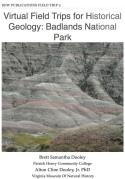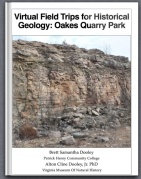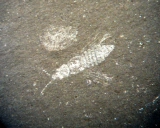While I was out of town this past weekend, the VMNH excavation crew had an excellent day in the pit at Solite Quarry. Led by Ray Vodden, the VMNH crew (Jim, Kal, and Sydney) and a few students from Virginia Tech braved the cold to find some stellar fossils. One such find is a potentially complete specimen of Mecistotrachelos, uncovered by our educator Sydney Brown. Mecistotrachelos is a gliding diapsid reptile that was originally described by former VMNH curator Nick Fraser in 2007. Prior to Saturday’s excavation, there were only two confirmed Mecistotrachelos specimens. Today, I am happy to say we have a third! In the picture above, the head, curling neck, and upper body of the reptile can be seen. Unlike the holotype and paratype of this species (both housed at VMNH), this specimen has a good amount of relief. I was able to use low-angle lighting to capture several features of the skeleton. We also have an adjacent block that might contain the posterior half of the specimen. If you would like to learn more about Mecistotrachelos, check out Butch’s blog post, “From the collections room (Mecistotrachelos).” Great find, Sydney!
Another intriguing fossil was this branching plant found by curator Kal Ivanov. At first it looks like a cycad, but the specimen possesses a long stem with about seven fronds emerging from it. I have been in contact with paleobotanist Dr. Brian Axsmith, one of VMNH’s research associates, to get his opinion on the ID of this specimen.
No Tanytrachelos findings this time, but there were several fish, including the remains of a possible a Coelacanth, seen in the above picture. UPDATE:What we previously identified as a fish in the above photograph is actually the thoracic region of Mecistotrachelos.
For all the structural geology fans, shown above is a small fish with its head separated from the rest of its body due to movement along a fault. The arrows indicate the direction of movement. Stay tuned in the weeks to come for a guest post from VMNH curator Jim Beard, who will be writing about the geology of our excavation area.













